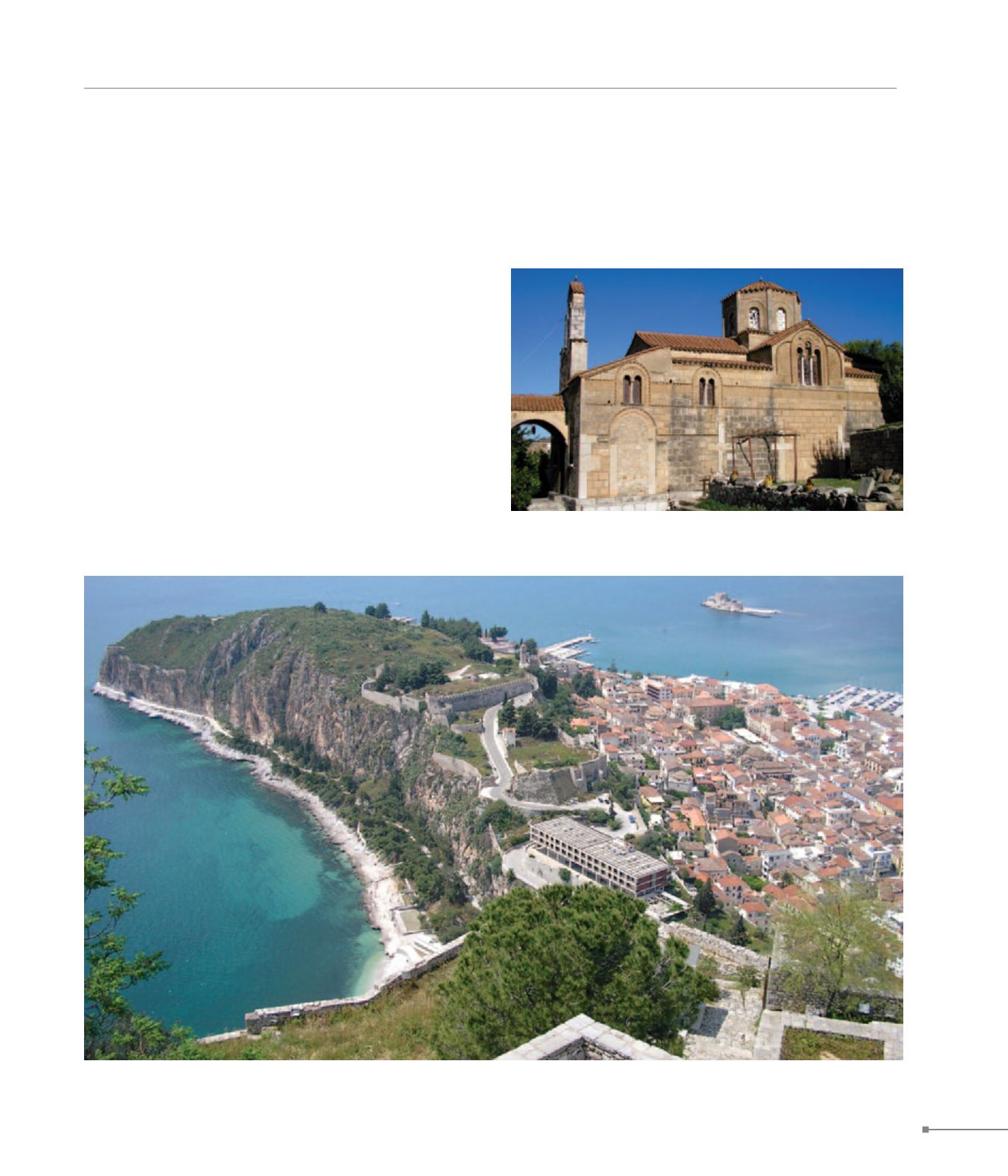
Nafplion.
Aria.
PELOPONNESE
221
288. Aria, Aghia monastery, catholicon (Άρια, Αγία Μονή, καθολικό)
287. Nafplion, Akronafplia (Ναύπλιο, Ακροναυπλία)
287.
Nafplion.
The first serious attempt for the fortification of the Akronafplia
promontory was made by the Nafplian Sgouroi family in the
12th c. According to the original Byzantine plan, on which sub-
sequent alterations were based, only the N and E sides of the
town were fortified; the S side and the W tip of the promontory
were so steep that there was no need. Fortifications were com-
pleted just before the Fourth Crusade (1204). The fortress fea-
tured two enclosures: the outer occupied the E side, where the
promontory communicated with land. The other was located
higher on the N side. In 1210, the fortress was conquered by
the Franks, who made very few changes, mainly intending to
control the inhabitants’ passage. Radical reconstructions took
place in the first (1388-1540) and second (1686-1715) periods
of Venetian rule. In 1470 the Castel di Toro was built, chang-
ing access to the fortress. Under the second Venetian rule the
Sagredos’ Gate was opened in the N and special alterations
took place to support the development of batteries (artillery).
Aghioi Theodoroi islet was fortified by the Venetians in 1773
and renamed Bourtzi.
288.
Aria.
Aghia monastery was founded in 1149 by Leo, the bishop of Ar-
gos, according to a founder’s inscription on the S side of the W
catholicon entrance. This is a complex, cross-in-square church
built in flawless cloisonné masonry.


